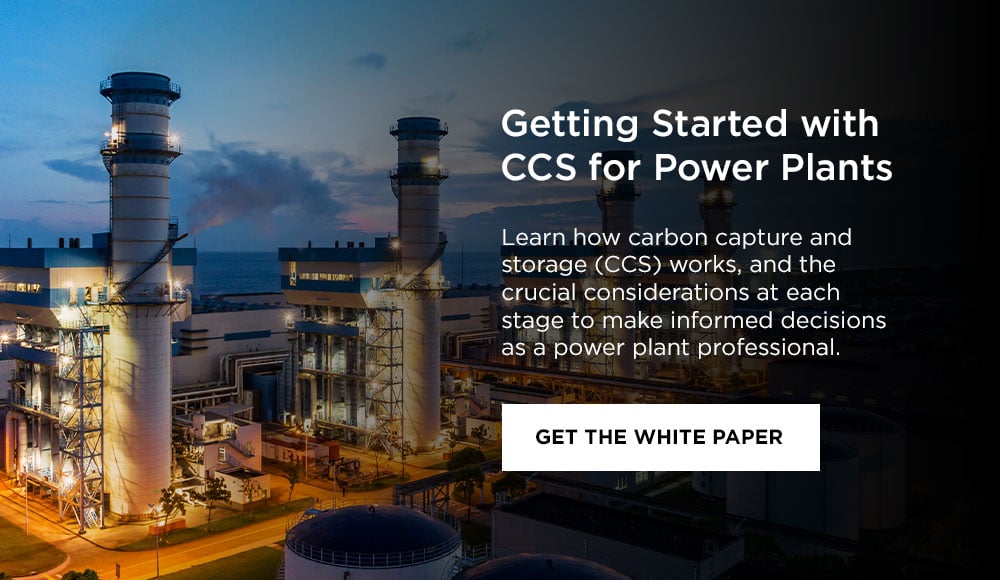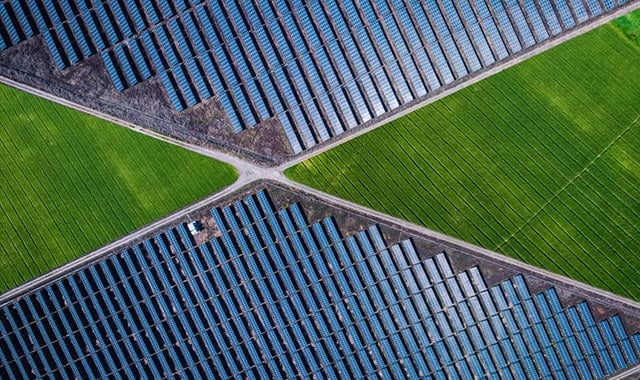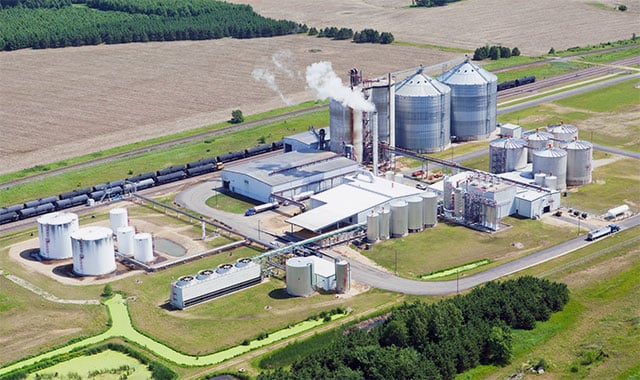Breaking Through Barriers to Entry for Carbon Capture and Storage (CCS) for Power Plants

Carbon capture and storage (CCS) can help fossil fuel-fired power plants meet new rules for carbon reduction proposed by the Environmental Protection Agency (EPA). However, implementing CCS is a complex undertaking that involves numerous decisions, technical challenges and risks. A strategic approach tailored to the unique context of the plant will maximize the benefits and minimize potential risks.
Barriers to Entry for CCS
Under proposed new EPA rules, gas- and coal-fired power plants must significantly cut carbon (CO2) emissions by 2030 or 2035 (depending on plant type) if they plan to remain operational. CCS is one of the pathways EPA has outlined that will enable power companies to continue to leverage existing assets while transitioning to a Net Zero Carbon future. A successful CCS strategy hinges not only on technical considerations but also economic forces and policy drivers.
CCS presents numerous challenges and decisions at each stage of the process—capture, transport and storage. Barriers to entry include (but are not limited to) the following.
Technical Barriers
Designing and implementing a CCS solution is technically challenging, especially during the capture and storage phases. Carbon capture must be tailored to the fuel type and combustion processes used, as well as other considerations, such as CO2 concentrations and total volume.
On the storage side, technical expertise is required to choose a suitable location, manage safe injection operations, and ensure that CO2 will not migrate or escape. Most power companies do not have the technical expertise on staff to make effective CCS decisions or mitigate potential CCS risks.
Economic Barriers
CCS technology may require substantial upfront investment and ongoing operational expenses. These include costs for the capture, transport, and storage of CO2. Plant owners must balance these costs against the financial benefits of continued operations and financial incentives such as tax credits, subsidies and monetization opportunities (e.g., carbon markets).
Operational Barriers
Retrofitting existing power plants with CCS technology can be technically challenging and expensive. Some capture methods require substantial modifications to plant infrastructure that can cause significant operational disruption.
In addition, power companies must consider the energy penalty of CCS, which will vary by capture technology. Expending energy on carbon capture cuts into energy available for power generation.
Logistical Barriers
Finding suitable geological formations for CO2 storage and setting up transportation infrastructure (like pipelines) for CO2 are significant logistical challenges. The availability of geographically convenient storage locations and existing infrastructure can have a big impact on the costs and overall feasibility of a CCS project. The permitting process can also be onerous for CCS projects.

Questions to Ask
When implementing Carbon Capture and Storage (CCS) technology, it's crucial to thoroughly assess each stage—capture, transport, and storage—to ensure efficiency, feasibility, and safety. Here are key questions to consider at each stage.
Stage 1: Capture
Technology Suitability:
- What type of capture technology (pre-combustion, post-combustion, oxy-combustion) is most suitable for the plant's existing infrastructure and operational processes?
Efficiency and Performance:
- How efficient is the capture process?
- What percentage of CO2 emissions can realistically be captured?
Energy Penalty:
- What is the energy penalty of the chosen capture technology?
- How will the energy penalty affect the overall efficiency and cost of power generation?
Cost Implications:
- What are the capital and operational costs associated with implementing and maintaining the capture technology?
Retrofitting Needs:
- If retrofitting is required, what are the technical and logistical challenges involved?
- How will these challenges impact current operations?
Regulatory Compliance:
- Does the capture technology comply with current environmental regulations and standards?
Stage 2: Transport
Mode of Transportation:
- Is pipeline, truck, or rail the most feasible mode of transportation for the captured CO2, given the plant location and existing infrastructure?
Distance and Volume:
- What is the distance to the storage site?
What volume of CO2 needs to be transported?
- How do these factors influence the choice and cost of transportation?
Safety and Reliability:
- How can the safety and reliability of CO2 transportation be assured, particularly in densely populated or environmentally sensitive areas?
Infrastructure Requirements:
- What infrastructure needs to be developed or can be converted for CO2 transport?
- What are the associated costs and regulatory hurdles?
Environmental Impact:
- What is the environmental impact of the transportation process?
- How can the impact be minimized?
Stage 3: Storage
Site Selection:
- What are the geological characteristics of the proposed storage site?
- How suitable is the proposed geological storage site for long-term CO2 storage?
Capacity and Longevity:
- What is the storage capacity of the site?
- How long can the storage site securely contain the CO2?
Monitoring, Reporting and Verification (MRV):
- What methods will be used for monitoring and verifying the integrity of the stored CO2?
- How will leaks or migration be detected and addressed?
Regulatory Compliance:
- What are the legal and regulatory requirements for CO2 storage in the chosen location, including permits and long-term liability?
Risk Management:
- What are the potential risks associated with CO2 storage at this site?
- What contingency plans are in place to manage these risks?
Community and Stakeholder Engagement:
- How will local communities and stakeholders be engaged and informed about the storage project?
- What are their concerns?
- How can their concerns be addressed?
A Way Forward: Getting Started with CCS
Successfully navigating the complexities of carbon capture and storage in the power sector requires technical expertise and experience. Battelle Carbon Storage Services offers comprehensive solutions to tackle the challenges of CCS implementation. We work with power companies to break through the technical and economic barriers, reduce CCS risks, and ensure a smooth transition to decarbonization.
Related Blogs
BATTELLE UPDATES
Receive updates from Battelle for an all-access pass to the incredible work of Battelle researchers.








